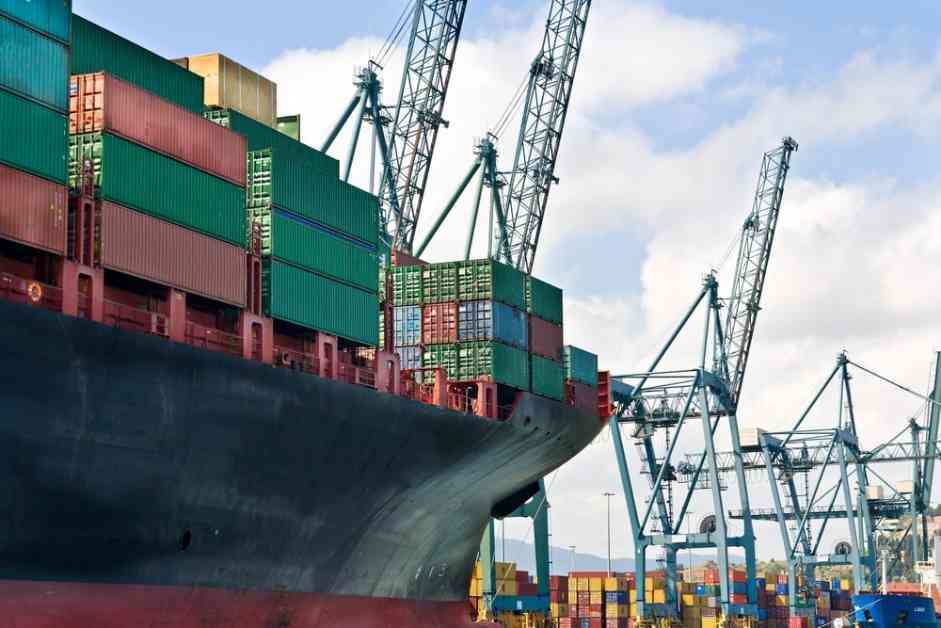Ocean freight container spot rates have seen a significant increase on major trade routes since the beginning of May, leading to speculation that the peak season has arrived earlier than expected in 2024. The surge in rates has left many in the industry wondering about the underlying reasons for such dramatic movements.
The most notable rise in rates has been observed on the Far East to North Europe trade route, with a 30% increase from April 1st to May 16th, reaching USD 4,343 per FEU. This represents a 198% increase compared to the rates from a year ago. Similarly, rates from the Far East to the US West Coast have surged by 29%, standing at USD 4,468 per FEU on May 16th, which is 214% higher than the rates from 12 months ago. The Far East to Mediterranean trade route has also experienced a 22% increase in rates, reaching USD 5,044 per FEU on May 16th, doubling the rates from a year ago. Additionally, rates from the Far East to the US East Coast have risen by 21%, reaching USD 5,584 per FEU on May 16th, marking a 129% increase compared to rates from 12 months ago.
Emily Stausbøll, a Senior Shipping Analyst at Xeneta, has pointed out various factors contributing to these rate hikes. She noted that the surge in demand during the first quarter of 2024, coupled with the ongoing Red Sea crisis impacting shipping capacity, has played a significant role in driving up rates. The lingering effects of port congestion and capacity constraints due to the Covid-19 pandemic have also added pressure on the market.
Stausbøll emphasized the importance of shippers understanding their individual supply chains and the associated risks to enhance resilience. While short-term rates have seen a sharp increase, long-term rates have remained relatively stable, indicating that carriers are approaching the two markets separately. This strategy aims to secure long-term volumes at lower rates, despite the elevated spot market rates.
The analyst highlighted the potential impact of unforeseen events, such as the Red Sea crisis, Panama Canal restrictions, and escalating US-China trade tensions, on the industry. She urged shippers to be prepared for black swan events by building up inventories and assessing the risks associated with their supply chains.
In conclusion, Stausbøll stressed the importance of shippers using data-driven insights to make informed decisions in a complex market environment. Each shipper must evaluate their risk tolerance and operational needs to determine the most suitable approach, whether it involves leveraging spot market opportunities or relying on long-term contracts. By understanding their supply chains and staying abreast of market developments, shippers can navigate the current challenges and make strategic decisions to optimize their shipping operations.








